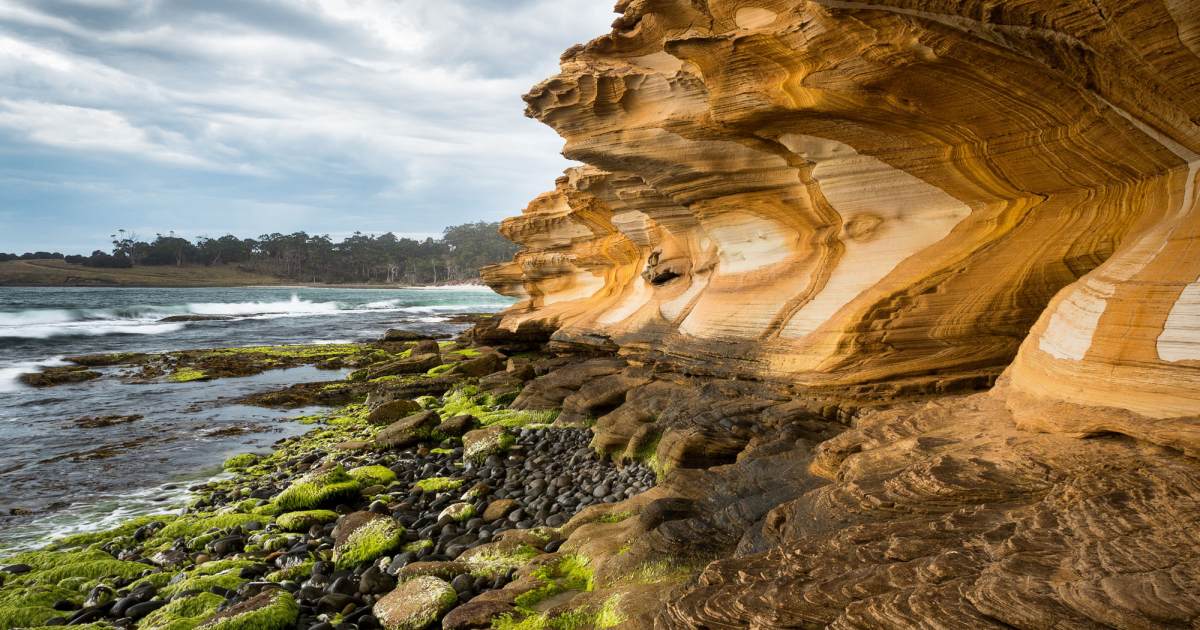
As far as solar farms go, this one is tiny. But a solar panel and battery system on Tasmania’s Maria Island will play an important role in powering tourism and conservation operations.
Situated off Tasmania’s east coast, Maria Island is a 30 minute ferry ride from Triabunna; which is around 86 kilometres north-east of Hobart.
The original inhabitants of Maria Island were the Puthikwilayti people, who have been custodians of the area for more than 40,000 years. The island was given its European name in 1642 by Dutch explorer Abel Tasman, who named it after Maria van Diemen; wife of the Governor-General of the Dutch East Indies in Batavia.
The 115.5-square-kilometre island became a penal settlement in 1825 and then a convict probation station 1842, which was abandoned in 1850. Other farmers, entrepreneurs and fishers have also occupied the island, with a peak population reaching around 500 – but they too eventually abandoned it.
Since that time Maria Island has hosted various conservation efforts. A national park was proclaimed in 1972 and then extended in 1991.
When the state’s Tasmanian devils became threatened with extinction due to a facial tumour disease, devils free of the disease were brought onto Maria Island as an insurance population. That has worked well – a little too well it seems – and the devils have been busy chowing down on a bunch of birds. There have been calls to have the devils removed.
All but one of the Tasmania’s twelve endemic bird species can be found on the island, and other animals calling it home include native pademelons, forester kangaroos, Bennett’s wallabies and Flinders Island wombats.
Maria Island has also seen a resurgence of human activity – albeit just visitors – keen to take in its many natural and historic sights.
Solar Power To Reduce Reliance On Dirty Diesel
As visitor numbers to Maria Island have grown, so has the need to upgrade service infrastructure including the jetty, power, water supply and sewerage treatment. In terms of power, to this point diesel-based generation has been used – and facility upgrades would have required even more diesel use.
In 2020, the Tasmanian Government issued a call for tenders for the design and construction of a ground-mount solar and battery storage system as part of the Maria Island Re-Discovered initiative and the Improved State-wide Visitor Infrastructure program.
Nearly two years down the track, that system will soon be operational.
On Saturday, Tasmanian Minister for Parks Roger Jaensch announced construction had begun on the project, which consists of 55kW of solar power capacity and a battery storage capacity of 215kWh. According to Minister Jaensch, the system will be able to provide a minimum of two days battery autonomy.
A 55kW system in that location can be expected to generate an estimated 69.4 megawatt-hours of clean electricity a year – a bit more than the 65MWh required in the tender.
“The project is expected to be completed within a month, with no impact to visitors and ferry operations during this time,” said Minister Jaensch.
The system is being constructed within the existing Parks and Wildlife Service workshop precinct, away from visitor attractions.
You can learn more about Maria Island here.

 RSS - Posts
RSS - Posts



Speak Your Mind